This is the big one. We put the ChargePoint vs JuiceBox vs WallBox vs Grizzl-E vs Blink head to head. The best EV chargers ever created
We’ll basically be looking at every aspect from the charging speed to features, cable length and durability.
We’ll basically be looking at every aspect from the charging speed to features, cable length and durability.
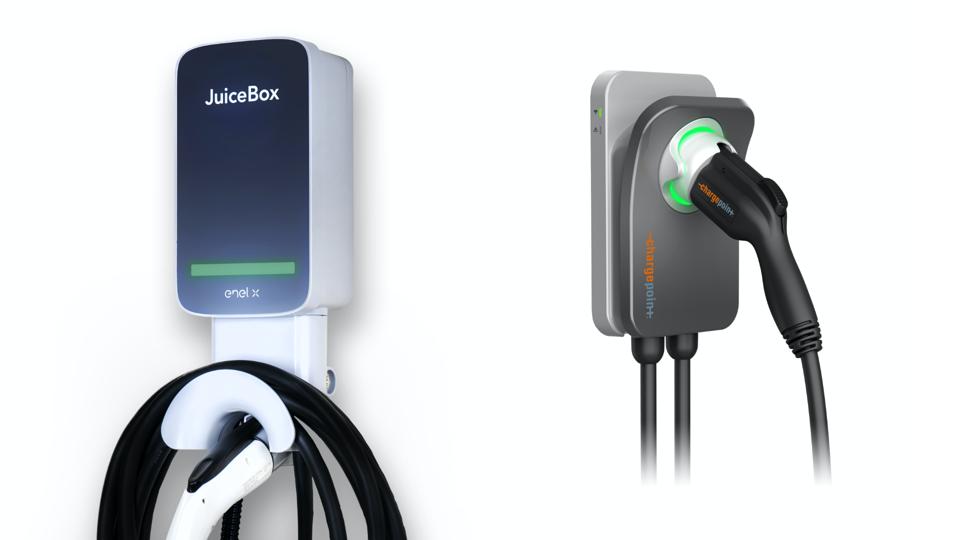
| Product | Amp rating | Level | Cable Length | Nema | Power | Price |
|---|---|---|---|---|---|---|
ChargePoint Home Flex – Level 2 EV Charging Station (16-50 Amp) 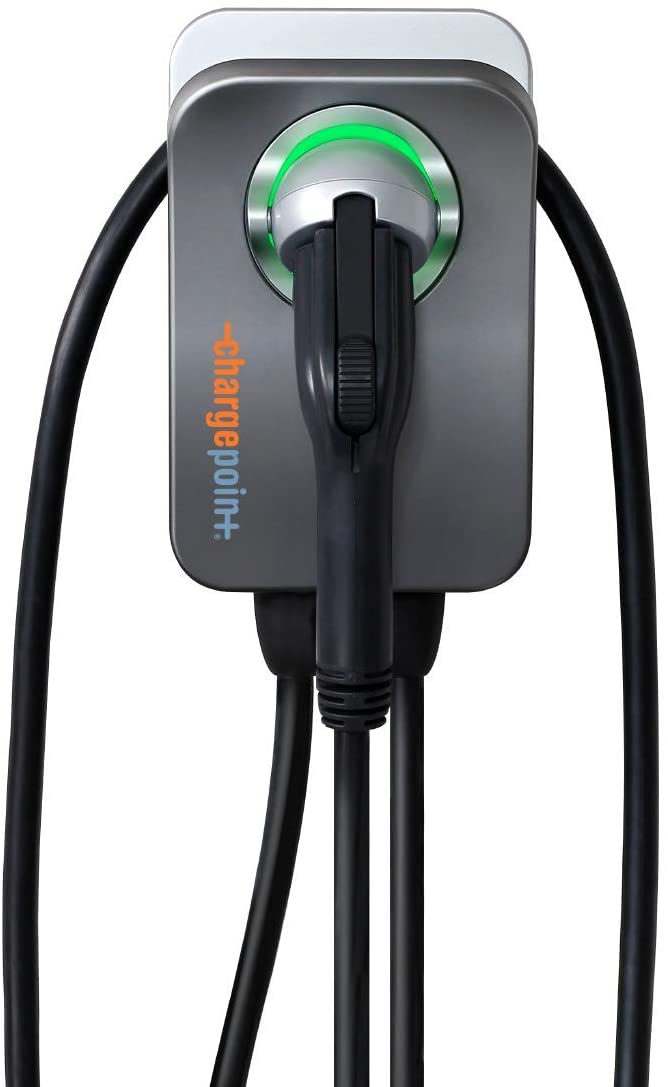 | 16 – 50 Amp | Level 2 | 23 Feet (7 M) | NEMA 14-50 & NEMA 6-50 | 12 kW | Click for more info |
ENEL X JuiceBox 40 – Level 2 EV Charging Station (40 Amp) 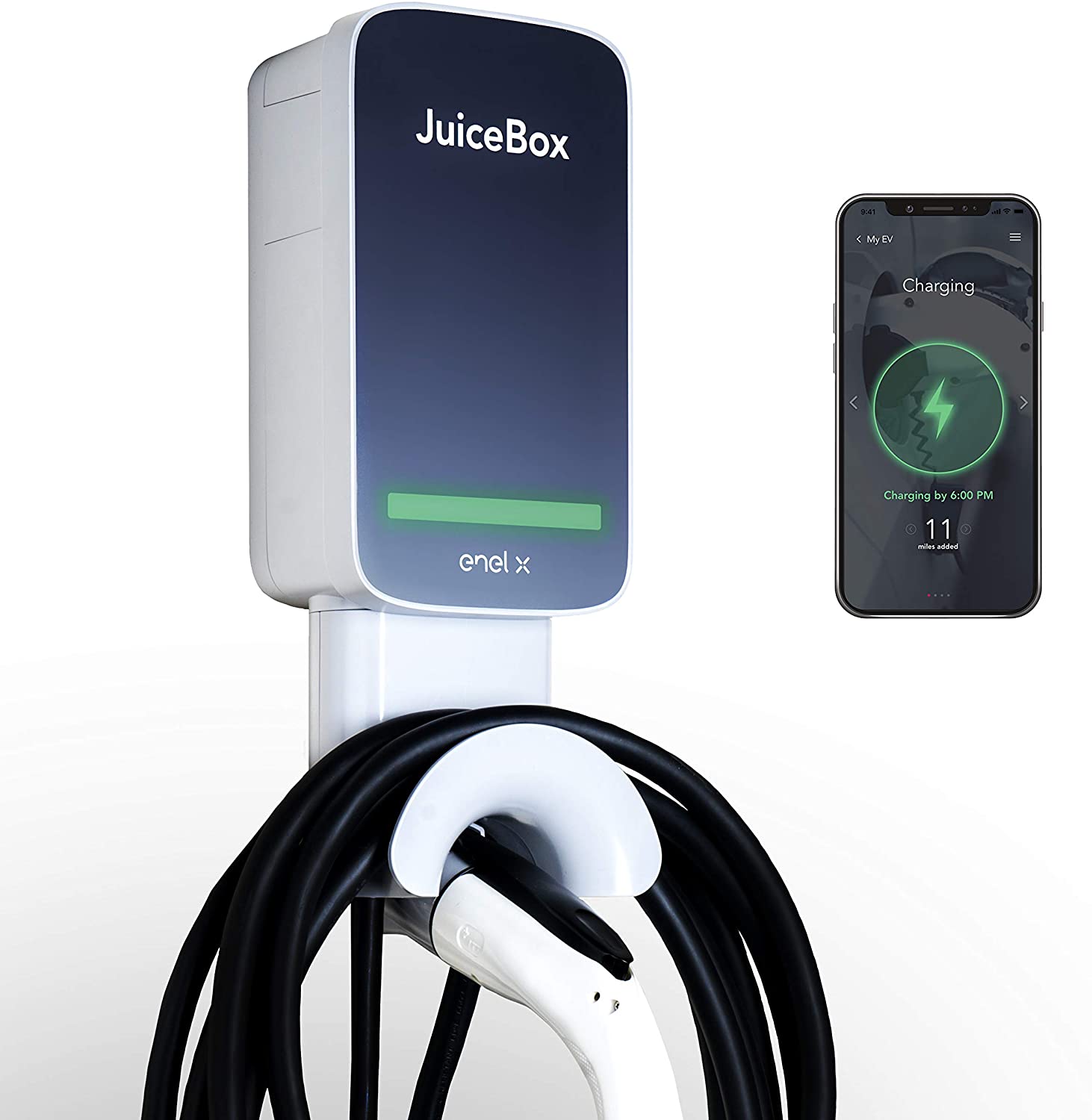 | 40 Amp | Level 2 | 25 feet (7.6 m) | NEMA 14-50 | 10 kW | Click for more info |
Wallbox Pulsar Plus – Level 2 EV Charging Station (48 Amp, 11 kW) 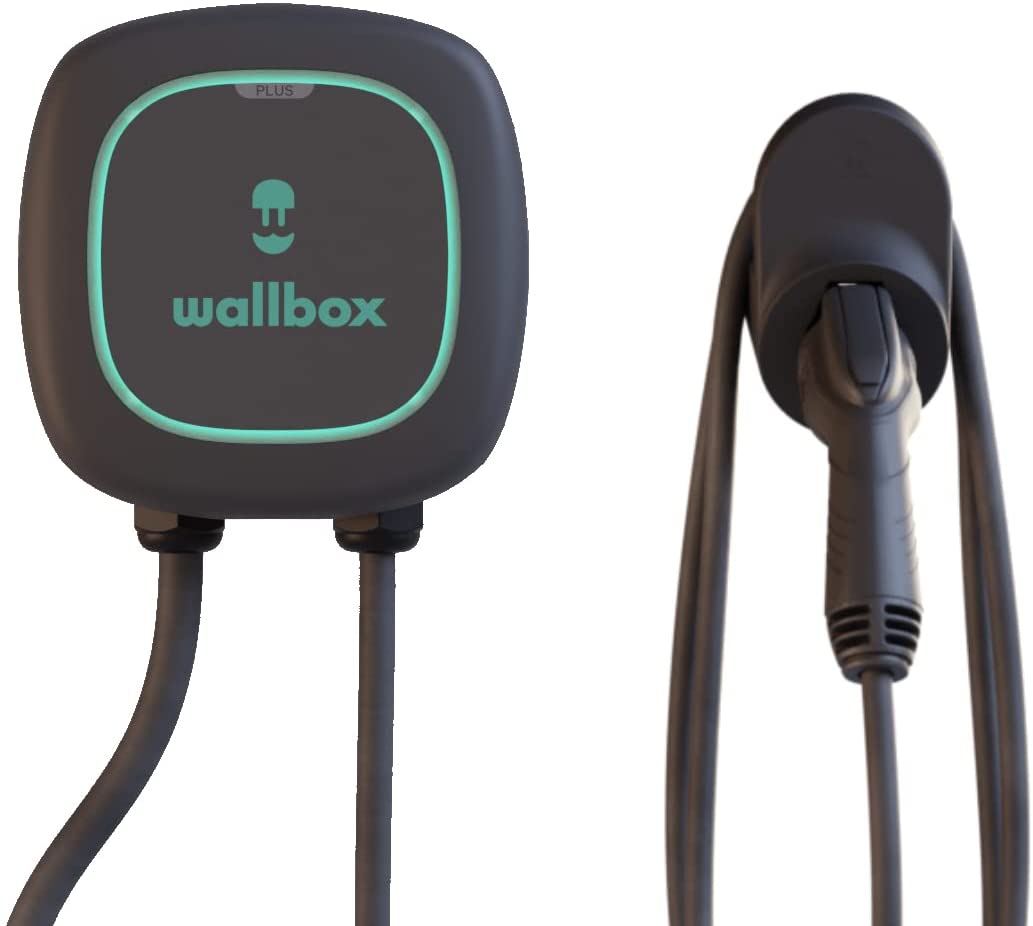 | 16 – 48 Amp | Level 2 | 25 feet (7.6 m) | Hardwired | 11.5 kW | Click for more info |
Grizzl-E Classic Charger – Level 2 EV Charging Station (16-40 Amp) 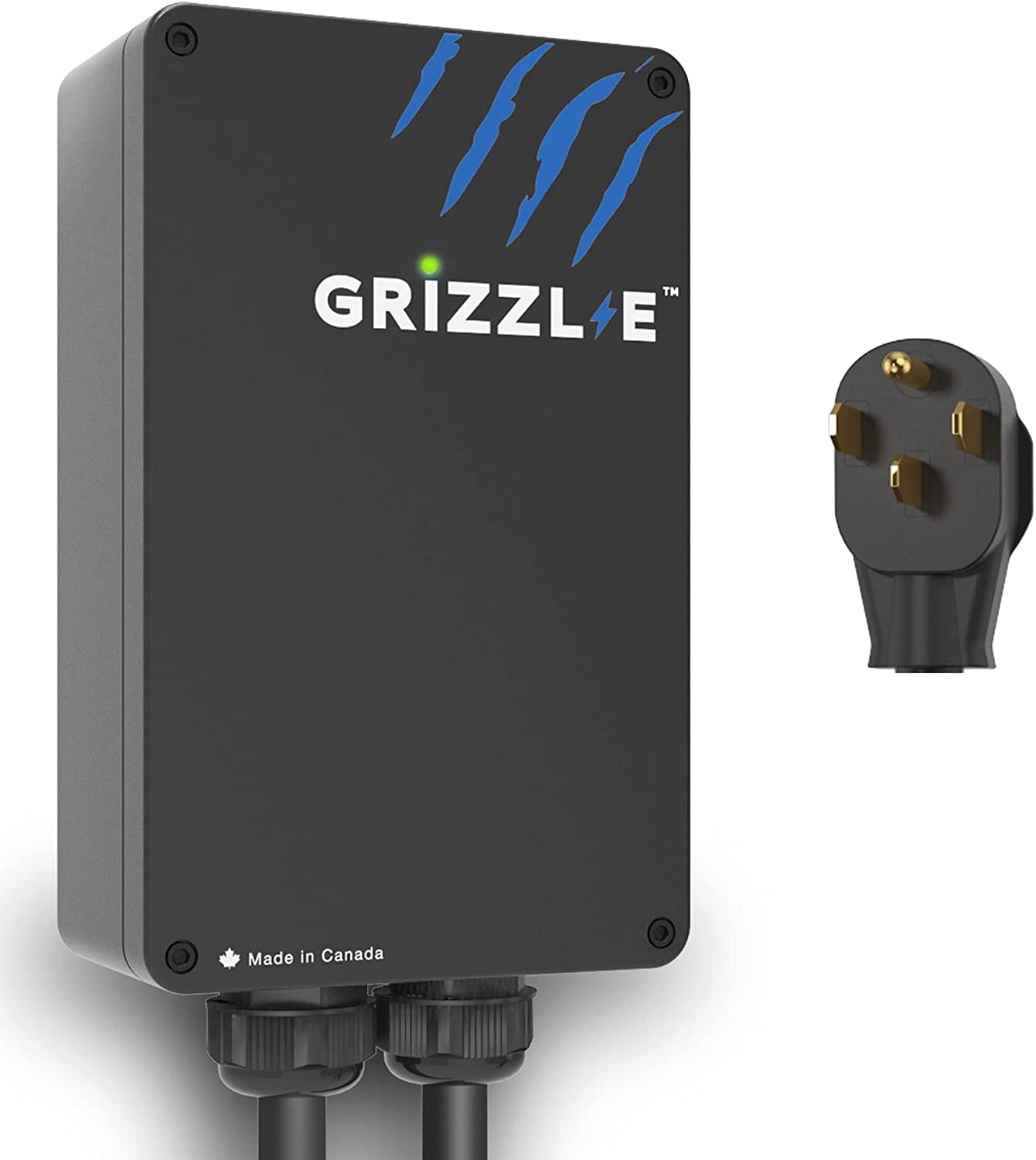 | 16 – 40 Amp | Level 2 | 24 Feet (7.3 M) | NEMA 14-50 & NEMA 06-50 | 9.6 kW | Click for more info |
Blink HQ 150 – Level 2 EV Charging Station (32 Amp) 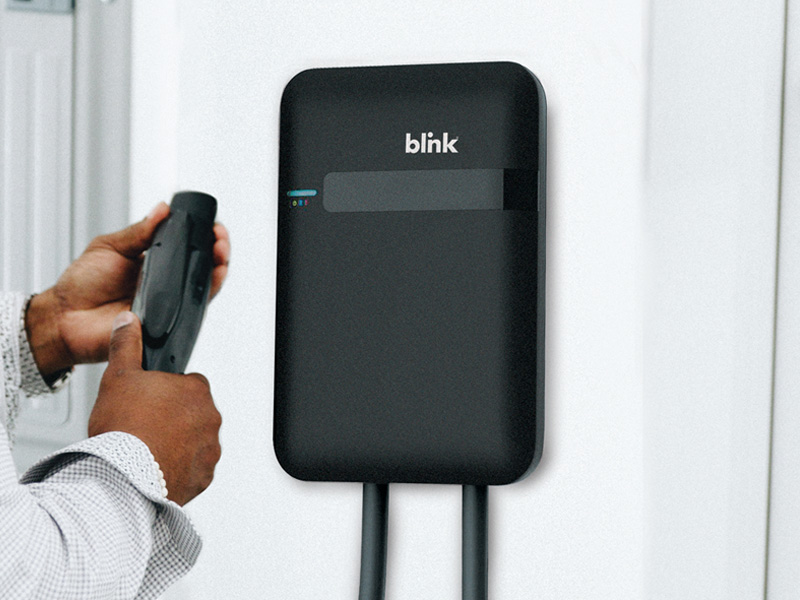 | 32 Amp | Level 2 | 18 Feet (5.4 M) | NEMA 6 – 50 | 7.6 kW | Click for more info |
Let’s have a look at each product in particular.
ChargePoint Home Flex – Level 2 EV Charging Station (16-50 Amp)
| Product | Amp rating | Level | Cable Length | Nema | Power | Price |
|---|---|---|---|---|---|---|
ChargePoint Home Flex – Level 2 EV Charging Station (16-50 Amp)  | 16 – 50 Amp | Level 2 | 23 Feet (7 M) | NEMA 14-50 & NEMA 6-50 | 12 kW | Click for more info |
This is a 50-Amp charger that can deliver up to 12 kW of power through its 23ft (7m) charging cable. It uses an SAE J1772 connector so it is able to charge any kind of EV in North America including Tesla models which although they use a custom charge port, there’s an adapter that comes included when you buy one. You can plug it into a NEMA 14-50 or NEMA 6-50 wall outlet.
You can connect to it through ChargePoint’s app, the same one which you would normally use to find public charging points. The app can start it or stop it and it allows you to do that also via your voice because of Amazon Alexa and Google Assistant integration. You can even go so far as asking it how much you’ve been paying to charge your electric car this month.
The app can show you a complete report on every charging session in terms of how much energy you’ve used, how much it cost and how long it took.
The ChargePoint Flex is NEMA 3R rated so we’d recommend that you keep it away from water as much as possible. The JuiceBox and Wallbox are tougher chargers. This EV charging station comes with a 3-Year warranty and 24/7 Customer support.
ENEL X JuiceBox 40 – Level 2 EV Charging Station (40 Amp)
| Product | Amp rating | Level | Cable Length | Nema | Power | Price |
|---|---|---|---|---|---|---|
ENEL X JuiceBox 40 – Level 2 EV Charging Station (40 Amp)  | 40 Amp | Level 2 | 25 feet (7.6 m) | NEMA 14-50 | 10 kW | Click for more info |
ChargePoint Home Flex vs Enel X JuiceBox
The main difference between the ChargePoint HomeFlex vs the JuiceBox is that the JuiceBox can only go up to 40 Amps while the ChargePoint can output 50 amps.
This translates to a difference in power of course, the ChargePoint has a power output of 12 kW compared to the 10 kW on the Enel X JuiceBox. The Enel X has a NEMA 4X rating (IP66 equivalent) which really surpasses the ChargePoint’s NEMA 3R rating. The JuiceBox also has a slightly longer charging cable that measures 25 feet.
Both chargers come with a J1772 charging cable, both have a Wifi connection and smartphone app and can be scheduled to charge only at certain times of the day, controlled by voice or present detailed reports of each charging session.
The JuiceBox does have the CO2 metrics in their app that the ChargePoint doesn’t while the ChargePoint can answer more complex questions through Alexa and Google Assistant like “how much have I spent on charging my EV this month?”.
In terms of design, both chargers have their connector holster integrated into them and a minimalistic approach to things, no LCD screens or buttons. The ChargePoint does have a backlight on its holster with the Juice Box doesn’t. You can plug both chargers to a 50-Amp standard NEMA outlet or hardwire them.
ChargePoint Home Flex vs Grizzl-E
The main differences are in the Amp rating because the ChargePoint is a 50-Amp charger while the Grizzl-E is a 40-Amp charger. The Grizzl-E comes in a Classic or Smart version.
The Grizzl-E is much tougher with an IP67 rating while the ChargePoint only has a NEMA 3R rating (rough equivalent of IP14).
Neither can do power sharing, in the case of the Grizzl-E they also sell a Duo version with 2 charging cables attached to it. Both these devices are energy star certified. The Grizzl-E Classic version has no smart features but the Smart version does. Here the big difference between them is in the approach.
The ChargePoint comes with its own app, the same that you’d use for the public charging network, it is polished and works very well. The Grizzl-E charger is OCPP-compliant so it is basically open to any app that uses that protocol allowing you the freedom to use it with any app that you want. Their included one is not the best but that could change in the future.
Wallbox Pulsar Plus – Level 2 EV Charging Station (48 Amp, 11 kW)
| Product | Amp rating | Level | Cable Length | Nema | Power | Price |
|---|---|---|---|---|---|---|
Wallbox Pulsar Plus – Level 2 EV Charging Station (48 Amp, 11 kW)  | 16 – 48 Amp | Level 2 | 25 feet (7.6 m) | Hardwired | 11.5 kW | Click for more info |
ChargePoint Home Flex vs Wallbox Pulsar Plus
Both chargers deliver essentially the same amount of power, 11.5 kW for the 48-Amp Wallbox and 12 kW for the 50-Amp ChargePoint and even though the numbers are slightly different, in reality it won’t make any difference. The Wallbox has the additional Bluetooth connectivity, something which you won’t really find on other EV chargers.
One big difference is that the ChargePoint comes with a NEMA connector for 6-50 or 14-50 outlets while the 48-Amp Wallbox can only be hardwired (The 40-Amp version does come with a NEMA connector so you can plug it in)
Another difference is in features related to energy usage. The Wallbox can do power sharing on the same circuit while the ChargePoint cannot. This means that two Wallbox chargers can be wired to the same circuit breaker and they will communicated with eachother and balance the power usage so they don’t overload it.
The Wallbox also has the additional solar excess feature which if you have any panels installed in your home, it allows you to select how much power you want the charger to draw from solar energy or from the grid, allowing you to spend less on your electricity bill.
The Wallbox Pulsar Plus charger is also IP54 rated which means it can withstand water and dirt much better than the ChargePoint can. It also has a slightly longer charging cable that measures 25 feet and both use the same J1772 connector.
Wallbox Pulsar Plus vs Enel X Juicebox
The main difference is in the Amp rating: The Wallbox comes in 2 versions, a 40-Amp (With a NEMA 14-50 connector) and a 48-Amp (No connector, needs to be hardwired). The JuiceBox also comes in 2 versions: A 32-Amp and a 40-Amp version, both which come with a 14-50 connector.
The Enel X Juicebox is slightly tougher because it has a NEMA 4X rating (IP66 equivalent) while the Wallbox has an IP54 rating, however it is good to understand that both are capable of withstanding water splashes and dust.
In terms of smart EV charger features, both are capable of power sharing on the same circuit while the Wallbox has the added solar excess usage feature which allows you to tell it how much to draw from solar (If you have panels installed in your home) and how much from the grid.
Grizzl-E Classic Charger – Level 2 EV Charging Station (16-40 Amp)
| Product | Amp rating | Level | Cable Length | Nema | Power | Price |
|---|---|---|---|---|---|---|
Grizzl-E Classic Charger – Level 2 EV Charging Station (16-40 Amp)  | 16 – 40 Amp | Level 2 | 24 Feet (7.3 M) | NEMA 14-50 & NEMA 06-50 | 9.6 kW | Click for more info |
Enel X Juicebox vs Grizzl-E
One of the big differences is that the JuiceBox comes in a 32-Amp and 40-Amp version both of which are smart charges that have wifi connectivity while the Grizzl-E only comes as a 40-Amp but in 2 versions: Classic (No connectivity) or Smart (WiFi connectivity & Smartphone app).
The Grizzl-E is tougher with an IP67 rating and can literally be immersed in water while the JuiceBox has a NEMA 4X (IP66 equivalent) rating. Both are extremely tough and can withstand large amounts of water though.
The JuiceBox is capable of power sharing so you can plug 2 chargers to the same circuit and they’ll communicate and balance the load on the circuit while the Grizzl-E doesn’t do that.Instead, they will sell you the Duo version which is a charger with two J1772 cables.
The Grizzl-E Smart is OCPP-compliant so you can use any smartphone app with that protocol while the JuiceBox has its own app. But when we compare the included apps, the JuiceBox does a way better job. You get Alexa integration, detailed reports on charging sessions, CO2 metrics, real-time data, everything that you could imagine. The Grizzl-E’s app needs some serious work.
Both chargers can be plugged to a 14-50 outlet or hardwired and they both have charging cables of similar length, 24ft and 25 ft. Regardless of which one you buy, you will get a 3-year warranty.
Wallbox vs Grizzl-E
One of the key differences here is that the Wallbox comes in a 40-Amp (14-50 conector) and 48-Amp version (no connector, only hardwired) while the Grizzl-E comes in a 40-Amp version (14-50 & 6-50 connector) but you can choose for it to be either Smart (With Smartphone App & WiFi connectivity) or Classic (Without app and connectivity).The Wallbox has an IP54 rating while the Grizzl-E has a much higher IP66 rating giving it a clear advantage when it comes to withstanding water and dust. But the Grizzl-E doesn’t have power sharing, instead you have to get its Duo version with 2 charging cables if you want that. The Wallbox can balance the load on the circuit if there are 2 units connected. It also lets you set how much energy you want to use from solar panels (If you have them installed) and how much from the grid.
In terms of the smartphone app, there is no comparison because the Wallbox app is the clear winner here with much better design and user experience and better visualization of past charging data. The Grizzl-E app needs to be improved however this charger is OCPP compliant so you can potentially just use other apps.
Blink HQ 150 – Level 2 EV Charging Station (32 Amp)
| Product | Amp rating | Level | Cable Length | Nema | Power | Price |
|---|---|---|---|---|---|---|
Blink HQ 150 – Level 2 EV Charging Station (32 Amp)  | 32 Amp | Level 2 | 18 Feet (5.4 M) | NEMA 6 – 50 | 7.6 kW | Click for more info |
ChargePoint vs Blink
The big difference here is that the ChargePoint Home Flex is a 50-Amp Charger while the Blink HQ150 is a 32-Amp charger making the ChargePoint the clear winner in terms of charging speed. Both chargers can be plugged into a 6-50 outlet or hardwired. The Blink has a much shorter cable which only measures 18 feet compared to the 23 feet on the Home Flex.
Another major difference is that the ChargePoint is a smart charger which comes with WiFi and a smartphone app allowing you to schedule charging times, start it or stop it, measure the exact amount you’re paying each month on charging and much more while the Blink EV charger doesn’t offer any of these. Of course the Blink costs considerably less, but it only has a 1-Year warranty against the 3-Year warranty on the Home Flex.
Blink vs Juicebox
The main differences here are the fact that the Blink offers a 32-Amp version with no smart features while the JuiceBox comes in a 32-Amp and 40-Amp version with smart features that include WiFi connectivity and a smartphone app. The JuiceBox is also NEMA 4X (IP66) rated which makes it tougher and able to withstand water splashes. The JuiceBox also comes with 3 Years of warranty while the Blink only offers 1.
The smartphone app on the Juicebox allows you to set charging schedules, control it via your voice, geat real-time data on the charging process and go through your past charging sessions to find out how much you’re spending each month on your EV.
Wallbox vs Blink
The big difference between these two chargers is that the Wallbox comes in 2 versions that both have WiFi connectivity and a smartphone app: A 40-Amp version with a NEMA 14-50 connector and a 48-Amp version without a connector that needs to be hardwired. The Blink charger comes with a 6-50 connector.
The Wallbox offers special features like power sharing which allows you to connect two of these chargers to the same circuit without overloading it but also the ability to adjust how much energy is drawn from the solar panels on your roof and how much from the grid.
The smartphone app on the Wallbox allows for scheduling charging times, starting or stopping the device remotely and also visualizing data reports on each past charging session.
The charging cable is also shorter on the Blink with it measuring 18 feet vs the 25 feet you get on the Wallbox, however it is worth noting that the Blink charger is much cheaper.
Blink vs Grizzl-E Classic
Both of these chargers are not smart chargers, there is no WiFi or smartphone app. The Blink charging station can output 32 Amps of current while the Grizzl-E can output 40 Amps. The Grizzl-E has a longer 24ft cable compared to the Blink’s 18 feet and it is much tougher because the Grizzl-E has an IP67 rating, there is no comparison here in terms of build quality. It also has 3 years of warranty compared to just 1 year on the Blink chargers. Both devices can be plugged into a NEMA 6-50 outlet.
Our Score
